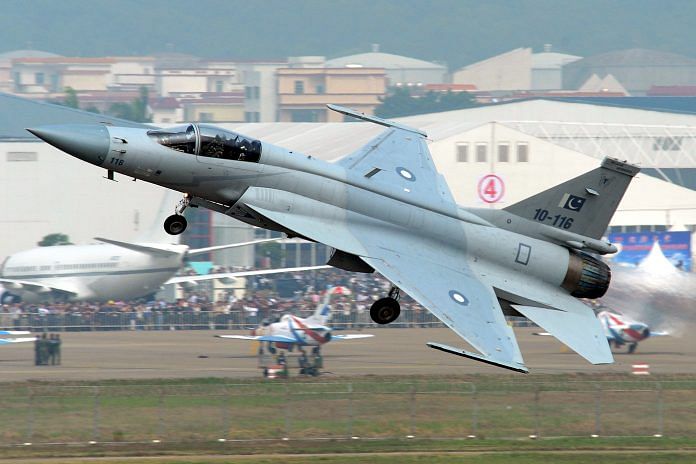After 2008, American exports fell sharply, while China’s picked up so much that it became the largest arms supplier to Pakistan, SIPRI data shows.
New Delhi: With the United States cutting down arms supplies to Pakistan over the last seven years, Islamabad’s dependence on China for its military needs has seen a sharp increase.
Pakistan was importing arms from both the US and China in almost equal quantities until 2008. After this, American supplies dipped drastically, while China’s picked up so much that it became the largest arms supplier to Pakistan from 2008 to 2017, according to Stockholm International Peace Research Institute (SIPRI) data.
Pakistan’s budding relationship with China also helped Beijing become the third largest arms exporter in the world, as its share in Pakistan’s defence purchases increased from 45 per cent in 2008 to 70 per cent in 2017 according to the SIPRI report.
The US contributed just 12 per cent in 2017. This change in trend can be attributed to shifts in Pakistan’s relations with the two big powers over the last decade.
Trend-indicator value (TIV)
SIPRI developed a unique system of measuring the volume of international transfers of conventional weapons using a common unit, the trend-indicator value (TIV). This is based on the known unit production costs of a core set of weapons and is intended to represent the transfer of military resources rather than the financial value of the transfer.
Decline in US-Pakistan arms trade
China’s exports to Pakistan started picking up in 2006, but the US was still the bigger supplier until 2008. After a trough in 2009 and a supply peak in 2010, US exports to Pakistan started declining constantly beginning in 2011 — from $1billion to just $21million in the past eight years, SIPRI data shows.
This decline can be attributed to major events such as the killing of Osama bin Laden in May 2011 which created a rift in the relations between Washington and Islamabad under President Obama. This was also the year when 26 Pakistani troops were killed at two military checkpoints in NATO attacks. Pakistan had retaliated by immediately closing off all NATO supply lines to Afghanistan, resulting in NATO supply trucks getting stuck in Afghanistan. Relations between the two countries have since remained rocky.
The trend-indicator value (in millions) of arms transfer from the US to Pakistan, measured by SIPRI , which takes into account the production costs of a core set of weapons, declined from 1,027 million TIV in 2010 to 269 million TIV in 2011. It further declined to 73 million TIV in 2015, which was Barack Obama’s last year in power. In 2016, the deal for Pakistan to get eight F-16 fighters fell through because the US refused to provide a subsidy to Pakistan to procure them.
Tension between Pakistan and the US increased after Donald Trump came to power. In 2017, arms trade came down to 21 million TIV. Trump also made a scathing threat to stop financial assistance to Islamabad in his tweet on 1 January this year saying, “The United States has foolishly given Pakistan more than 33 billion dollars in aid over the last 15 years, and they have given us nothing but lies & deceit, thinking of our leaders as fools. They give safe haven to the terrorists we hunt in Afghanistan, with little help. No more!”
China’s entry into the game
China has been supplying arms and technical knowledge to Pakistan since the 1980s, even helping Islamabad develop its nuclear weapons. However, this relationship grew over time as China began producing high-end ammunition systems ranging from rifles to combat aircraft and warships, and selling them to Pakistan at a price cheaper than the US. In 2007, Pakistan flew the first two JF-17s whose parts were made in China and assembled locally, and they cost a third of what the US had to offer.
In September 2016, months after the US-Pakistan F-16 deal was called off, China lent its support to Pakistan when the Chinese premier visited then Pakistani PM Nawaz Sharif, and said they would “support Pakistan” and “speak for Pakistan at every forum”.
The same month, Pakistan’s ministry of defence confirmed a production contract with China and the purchase of eight conventional diesel-electric submarines, costing around $4 billion to $5 billion.
In 2016, it was reported that Pakistan was allegedly conducting tests of China-made strike-capable, multi-role Wing Loong-I drones. China, it seems, has come to the rescue of Pakistan and offset its damaged relations with the US.




It’s Time for Dismantle CPEC
also free Baluchistan
Fight for Freedom of Xinziang.